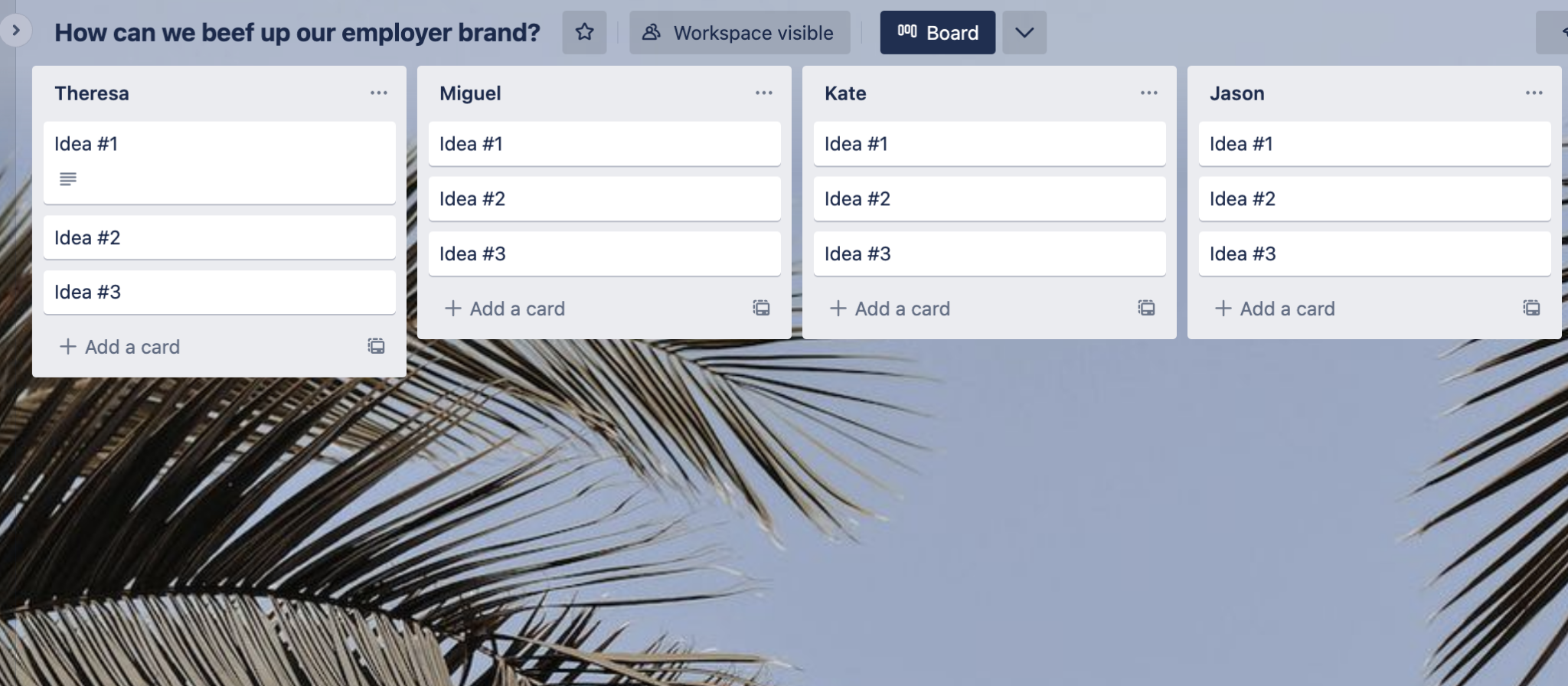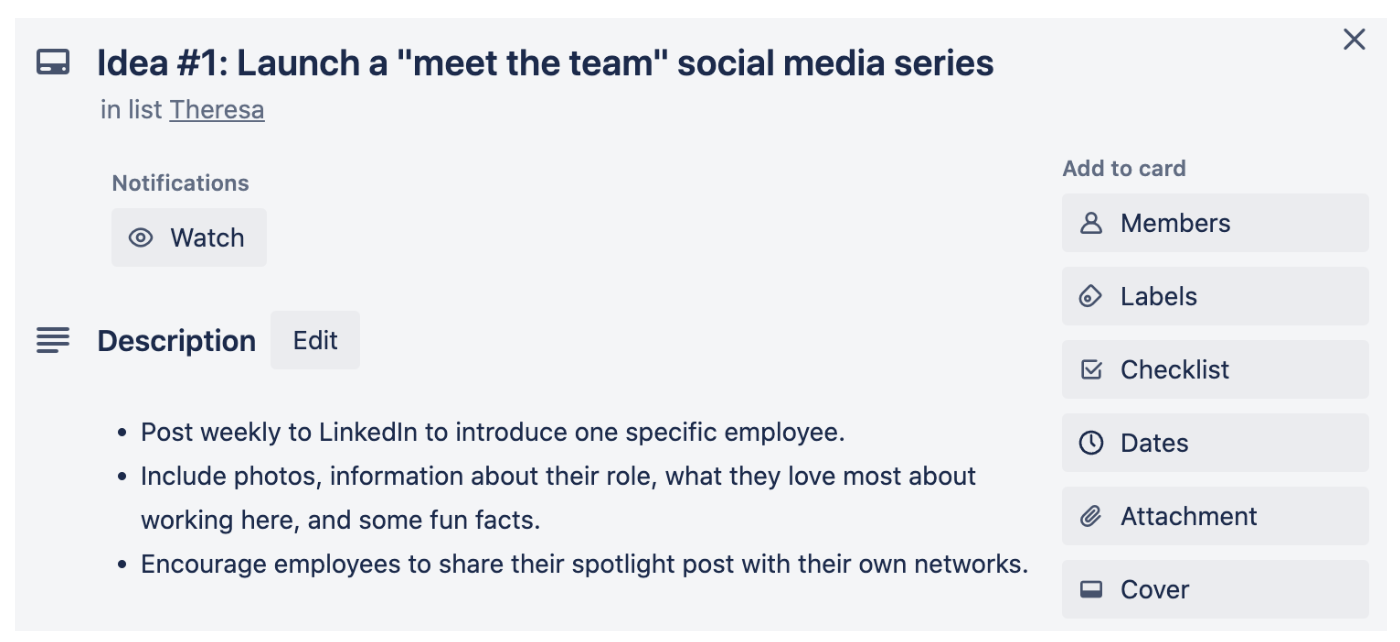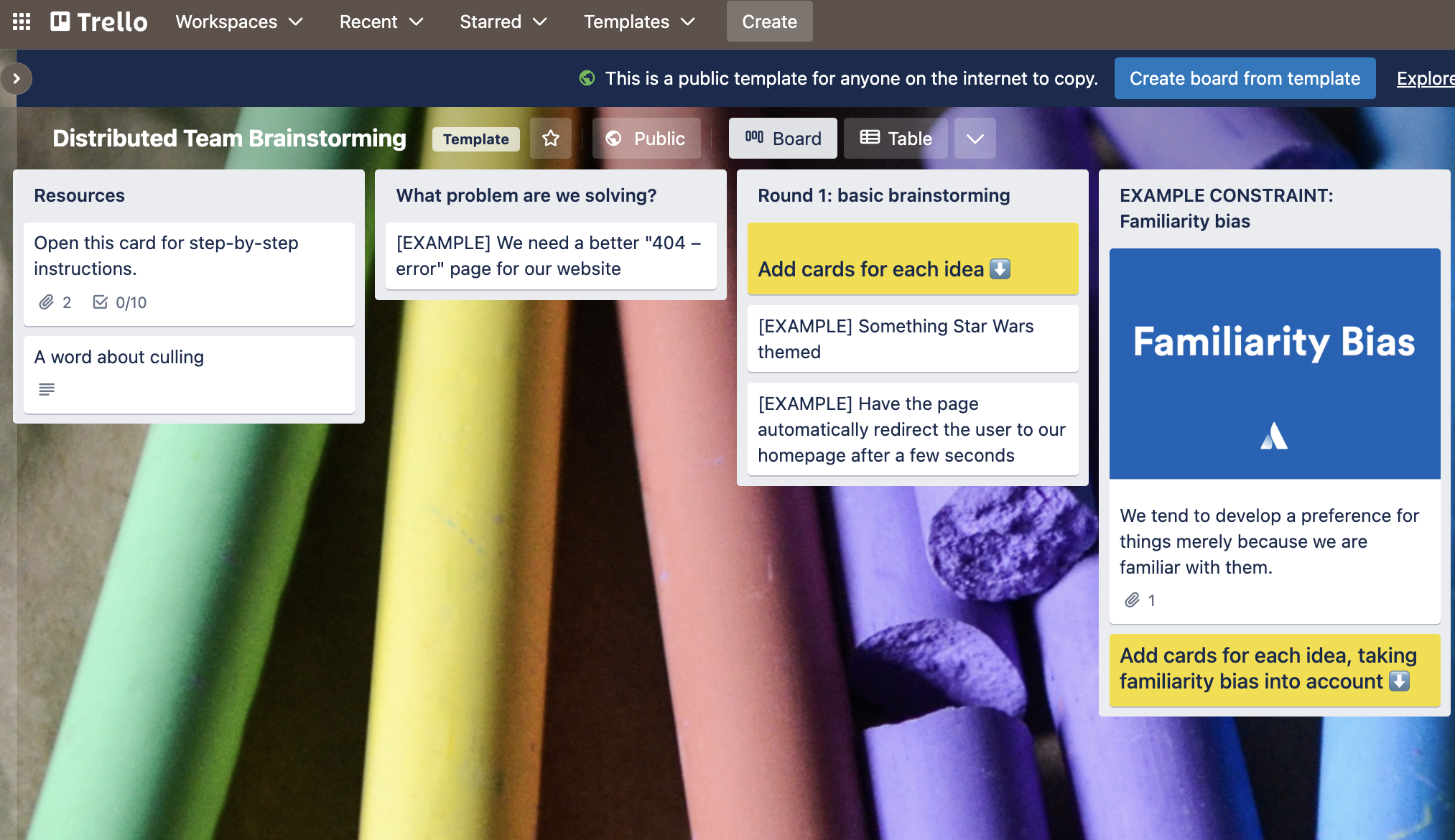How to build a better brainstorming sesh: try brainwriting
Brainstorming is best! Except when it isn’t. Use brainwriting to help your team bring their best ideas to the table.
Group brainstorming sessions have long been relied upon as the best way to uncover your team’s biggest and brightest ideas.
But the process? Oof, it can be fraught with frustration.
Some people feel may pressured and panicked as they try to come up with anything to share. Others inevitably steamroll their way in and dominate the entire conversation. It can feel like the whole meeting quickly turns into a competition of quantity over quality and, before you know it, you have dozens of half-baked ideas and no clear next steps.
Brainwriting is the better way. It’s a technique that will help your team generate ideas in an intentional, organized, collaborative, and perhaps most importantly, non-panic-inducing way.
What is brainwriting?
Established in the late 1960s by Bernd Rohrbach, a German marketing professional, brainwriting is a brainstorming method that relies on—you guessed it—writing. You allot a certain amount of quiet time, during which participants work independently to write down their ideas before sharing them with the group.
There are a variety of different brainwriting techniques you can use to limit time, choose participants, and build upon ideas together (and we’ll spell some out a little later). But they all rely on the basic premise of quietly jotting down ideas alone, rather than shouting them out in the rapid-fire format that most brainstorming sessions are known for.
So what’s the difference between brainstorming and brainwriting?
Here’s the simplest way to think about it: Brainwriting is a type of brainstorming. Brainstorming is the process of generating new ideas. Brainwriting is a specific approach or technique you use to make that happen.
What are the benefits of brainwriting?
While brainwriting might feel like a dramatic shift from the boisterous, fast-moving, and coffee-fueled brainstorming sessions you’re used to, there are several compelling advantages that make it a technique worth trying.
1. Come up with better ideas
One small study of 57 employees found that brainwriting helped teams come up with more ideas. In fact, the rate of idea generation was 71% higher when they used brainwriting compared to generating ideas together as a group.
But the real kicker? There didn’t just come up with more ideas—they came up with better ideas.
So why does this quiet time to write allow for more thoughtful and helpful suggestions? It probably comes down to two things: independence and silence.
Research from Stanford University shows that most people are at their most creative when they’re able to work on their own—even if it’s only for a little bit before rejoining a group.
And, the uninterrupted quiet time doesn’t hurt either. A recent study found that people who worked in silence (compared with those who worked with speech or other noise in the background) were better able to concentrate and also had lower stress levels while doing so.
2. Build a psychologically safe environment
Jumping into a lively brainstorming session can be nerve-racking, particularly if participants don’t know each other well, or are worried about immediate judgment or criticism from the people around them.
Brainwriting can help eliminate some of those concerns. While people do still share their ideas with the team, quietly passing around sticky notes or sliding Trello cards may nott feel as public and high-pressure as voicing an idea.
Brainwriting helps you foster an environment where everybody should feel able and encouraged to contribute—and supported when they do. In one study of healthcare clinicians, participants who used brainwriting reported that the method gave them a high degree of not only satisfaction, but psychological safety.
3. Build more diversity of thought
Because brainwriting opens doors for everybody on your team to share their ideas—including introverts who might not chime in otherwise—it makes sense that you’ll benefit from more diverse opinions and suggestions.
But brainwriting does more than just cast a wider net—it combats cognitive biases, particularly groupthink, the term for when decision-making suffers because group members are too hung up on conforming.
Brainwriting gives participants focused, uninterrupted time to generate and work through ideas on their own. When they aren’t immediately exposed to the influence of other people, they aren’t distracted by the pressures to agree or fit in.
How to use brainwriting 6-3-5 (hint: it’s easy!)
Coming up with better ideas in a more inclusive and supportive environment? Sounds like a no-brainer (we couldn’t resist one little brainstorming pun ).
Fortunately, brainwriting is easy to implement for your next brainstorming session—and 6-3-5 brainwriting is one of the most popular techniques that people turn to. Let’s break down how it works using (what else?) a Trello board.
1. Understand the basics
Pretty much everything you need to know about 6-3-5 brainwriting is right in the name:
It uses six participants who are tasked with coming up with three ideas in each five-minute round. You do six rounds, which brings you to 30-minutes of strictly idea generation.
However, people aren’t just coming up with a slew of random ideas. You’ll start with a clear question or problem statement to guide your brainstorming. In the first round, each person comes up with three original ideas that address the prompt. But in the next round, they pass their three ideas to the next person. That person has to come up with three more ideas that build on the contributions of the person ahead of them.
So there’s only one round where people “start from scratch,” so to speak, while all subsequent rounds require people to piggyback on the ideas that are already there.
2. Create your template
There are existing paper templates you can print and use if you’re doing a brainwriting session in-person.
But, if you want to collaborate in real-time with people in a remote or hybrid setting, creating a Trello board helps you capture all of those ideas and seamlessly move them between participants.
It’s simple: Start a new Trello board for your brainwriting session and name it using your question or problem statement. Next, set up a column for each participant and create three cards in each participant’s column—that’s one card for each idea. You can even add the participant as a “member” to each of their idea cards to easily keep track of where those ideas started.

3. Explain the “rules”
In the first round, participants should fill out their idea cards. They can rename the card to capture their idea, add notes or details to the card description, and even attach any relevant information.

When that first round is up? Participants should slide each of their idea cards into the participant’s column that’s to the right of their name. The person at the very end of the Trello board should slide their cards into the left-most column.
In the next five-minute round, people should add their thoughts (remember, they have to expand on the original idea) as a card comment. They’ll do that for each of the three idea cards that are in their column.
When it’s time for the next round, they slide all the cards to the next person again. You repeat that until you’ve completed all six rounds and the cards land back in the column where they started.
4. Discuss and collaborate
That short and focused session will generate a lot of ideas—108 and of them, if our math is right. Now it’s time to bring the group back together to talk through everything that bubbled to the surface:
- Are there any common ideas that should be grouped together?
- Which ideas are worth pursuing right away?
- Which ideas should you move to a “parking lot” to pursue later?
Brainwriting is still collaborative—even if the actual idea generation happens independently. So, make sure to reserve enough time (at least 30 minutes) specifically for everybody to discuss and process all of the ideas.
Of course, 6-3-5 brainwriting isn’t the only technique to use and there are plenty of ways to adapt it for your team. Don’t be afraid to experiment and find what helps you discover your boldest and brightest ideas.
Check out our Trello template for more brainstorming ideas, or modify it to use however you like.

The simple secret to better brainstorming? Writing
Brainstorming is a creative exercise, which means there isn’t technically a right or wrong way to go about it.
But if your current brainstorming sessions lead to nothing more than frustration, ideas from the same few people, and a bunch of post-it notes you’ll never actually pursue? Try brainwriting to give your team a safe space to noodle while still benefiting from the power of collaboration.
Always remember, meetings should save time, not waste it.










































